The Rocky Mountain Horse Breed Profile
Learn interesting facts about the Rocky Mountain horse an American horse breed.
Equitrekking interviews Ron Hatcher, a breeder of Rocky Mountain Horses at his Rebel Ridge Farm. Find out what makes the Rocky Mountain Horse unique as an American horse breed. Is this the right horse breed for you?
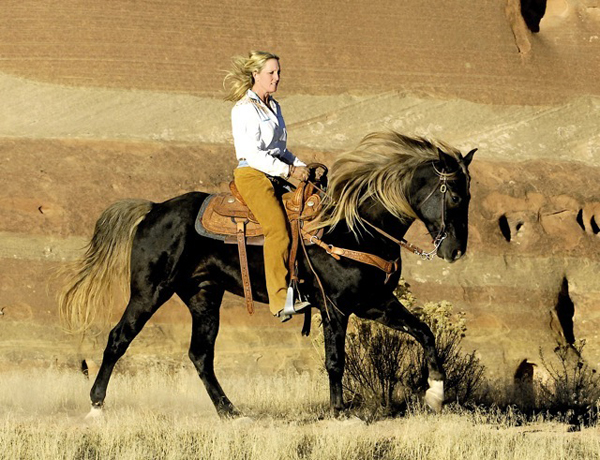
A rider takes to the trails on her Rocky Mountain Horse, a breed that's known to be sure-footed and easy-gaited.
by Raina Paucar
Raina for Equitrekking: What are the origins of the Rocky Mountain Horse?
Ron Hatcher: The Rocky Mountain Horse originated in the mountains of eastern Kentucky. The story is the foundation sire was brought in the late nineteenth century by a traveler returning to his native Virginia. He traded the horse in order to acquire the funds and supplies necessary to get home. As a result, the Rocky Mountain Horse we presently know evolved.
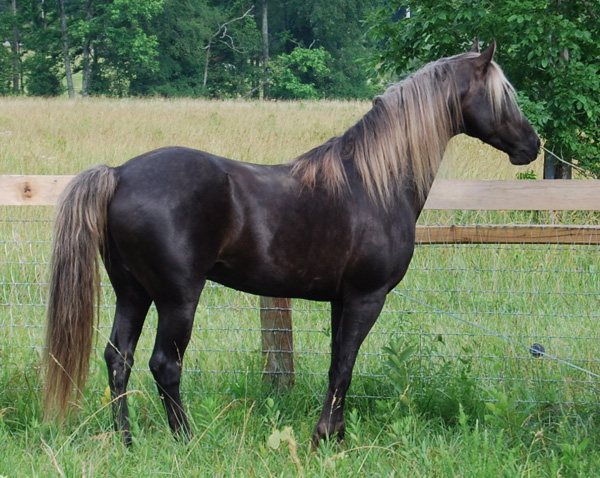
During the late 1800s and early 1900s, rural inhabitants of eastern Kentucky used horses during all seasons.
Equitrekking: What are the general conformation characteristics of the Rocky Mountain Horse?
Ron Hatcher: The Rocky ranges from 14.2 to 16 hands. They can be any solid color with limited white on the face and below the hocks. These horses are short backed with a wide chest and a well-set neck. Rocky Mountain Horses also have properly angled rear feet, as they are gaited horses. They have “teacup” chins and “foxed” ears.
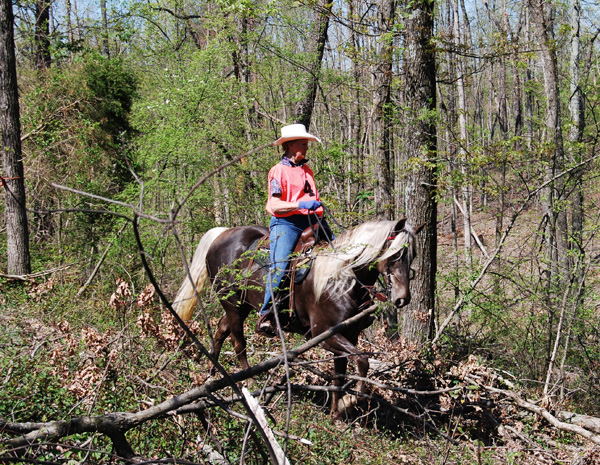
A Rocky Mountain Horse under saddle on a trail ride. Throughout history, Rocky Mountain Horses were a mount of choice for postmen, doctors, and traveling preachers in Kentucky.
Equitrekking: How has the Rocky Mountain Horse been used and ridden throughout history?
Ron Hatcher: The horse was originally utilized as a versatile farm animal. They could plow or pull wagons during the week, and then be ridden under saddle to take their owners to town on Saturdays. They safely pulled the family buggy to church on Sundays. This history lends itself to the Rocky motto of “One Horse for all Occasions." Most Rocky owners are trail riders. Rockies are popular for endurance riding and are also seen on the show circuit. The Rocky Mountain Horses have been recognized as a breed since 1986.
Equitrekking: What are some fun facts people may not know about Rocky Mountain Horses?
Ron Hatcher: Today there are approximately 20,000 of these unique horses in the world. Half of them reside in Kentucky, even though they are owned throughout the world. The Rocky Mountain Horse Association wants to spread the word among the equine world. This horse merits consideration. The smooth and lateral four-beat gait not only allows the horse to cover distance without tiring, but is also comfortable for the rider. Baby Boomers are you listening?
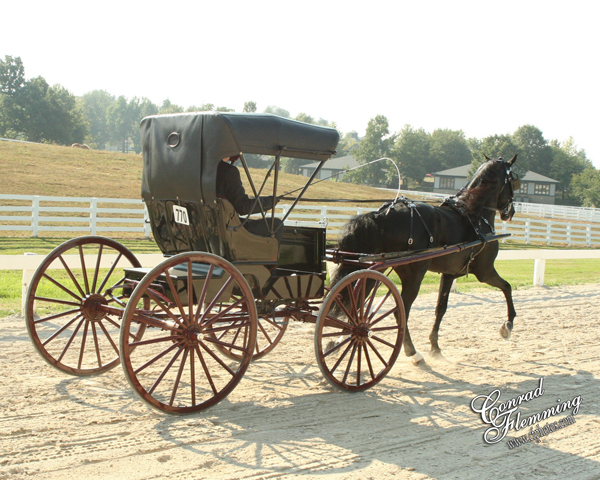
Gaited horses were needed for travel where there were no roads in mountainous terrain and thus developed stamina and strength.
Equitrekking: What kind of temperament is this breed best known?
Ron Hatcher: A standard joke among owners is, “You can’t own just one." Once introduced, people tend to “collect” them. These are very people-friendly, rideable horses. My experience is that when startled, they stop rather than bolt. They have an innate ability to adapt to the skill level of their rider. Send the right signal, and enjoy a great relaxing ride. Most Rockies are curious about the field in which they are working. If allowed, they would peer over your shoulder while you work. An owner of another breed, serving as a Rocky show manager, once told my wife, “I’ve seen 200 of your show horses and you have the Labrador Retriever of the horse world."
Equitrekking: What style of rider best suits the Rocky Mountain Horse?
Ron Hatcher: One who enjoys their horse as a reliable companion; whose horse comes to the halter and is alert. A rider that enjoys a horse that's not flighty when ridden. Someone who will enjoy the fact that others will admiringly ask, “Is that a Rocky?" They are ridden both English and Western. Plantation style (Saddle Seat) is particularly popular.
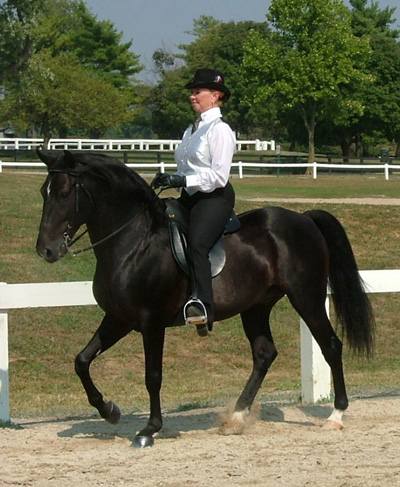
A Rocky Mountain being ridden Saddle Seat. This breed is known for its versatility and endurance.
Equitrekking: Has the Rocky Mountain Horse evolved over time?
Ron Hatcher: Responsible breeders always breed to the best they can afford. Hopefully, they aren’t breeding unworthy mares. Breeding is probably more discriminate in economic slowdowns. That being said, our time as a breed has been short, and more effort is rightfully devoted to preservation rather than “change.” The books of our registry are closed to all, except the offspring of registered Rocky Mountain Horses.
Equitrekking: Are there any famous historical Rocky Mountain Horses?
Ron Hatcher: “Tobe,” a stallion owned by Mr. Sam Tuttle, is well known and shows up frequently on pedigree papers.
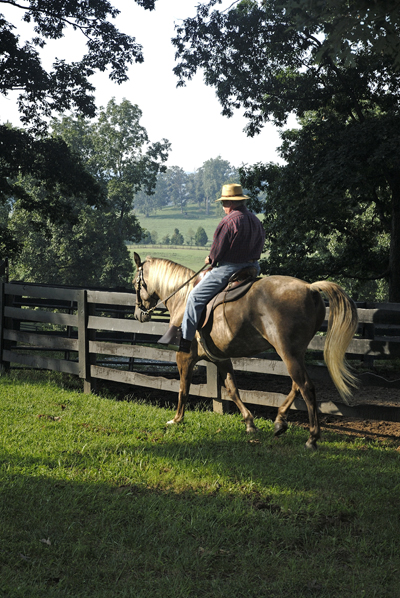
A rider heads home after a day on the trails.
Equitrekking: What makes the Rocky Mountain Horse unique as a breed?
Ron Hatcher: The Rocky is a naturally gaited, solid color, medium sized horse, known for its friendliness and willingness to please. They are cold blooded and came from an environment requiring durability. The result is a surprisingly stylish, easy keeper with heart.
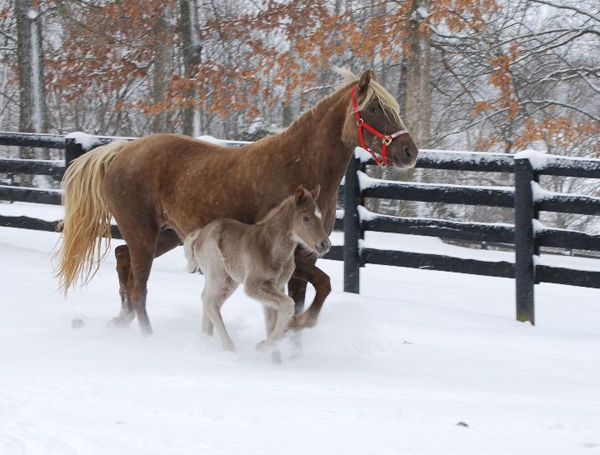
Rocky Mountain mare and foal, Sugar and Lora Lee.
Equitrekking: What are further resources for people interested in this breed?
Ron Hatcher: The Rocky Mountain Horse Association exists to protect, preserve and promote the Rocky Mountain Horse. The website is rmhorse.com. If you know a Rocky owner and have the time, let them tell you the joys of Rocky ownership.





